If you live in an area that receives one of the coldest winters, the best way that you can attempt to stay in the safety is to take care of your outdoor faucets. One of the best means to help you achieve the task would be to install a frost-free faucet. How about learning what is a frost-free faucet and how a frost-free faucet work?
The water is the shut off several inches away from the home in the case of a frost proof faucet. The heat in the home prevents the possibility of the water line freezing in your home. Since there is no water in the faucet, the water does not freeze. When the valve is shut off, all the water is drained off from the faucet.
What is a “Frost Free” Hose Spigot and How Does It Work?
A frost free or freezeproof faucet is a type of tap, cock, or spigot that is resistant to freezing. A frost free hose spigot is a faucet that has been designed for preventing the water from freezing inside the pipe or valve. This is achieved with the help of a long stem for the valve that reaches inside your home and does not stay outside.

I love gardening and have several lines of garden hoses running from my outdoor faucets. However, the extreme temperatures every winter caused severe problems resulting in bursting and cracking pipes. This made me lose hundreds of dollars every year on unwanted expenditure that was quite recurring in nature. However, my knowledge of the water behavior made me think about frost-free faucets and use them effectively to prevent freezing. I thought of sharing my experience with you so that you do not have to go through what I went through.
The technique involves using a shut-off valve or compression valve for the faucet located deep inside your home interiors. The temperatures inside the home are generally higher and this will prevent freezing. The freeze free spigot or frost free faucet looks the same as the traditional faucet, but that is where the similarity between the two ends. The pipe to the shut off valve is also located at a downward angle so that the water inside the pipe is drained off. This will ensure that nothing will freeze inside the pipe.
Frost Free vs. Traditional Hose Bib – The Differences
The primary difference between the frost-free and traditional hose bib lies in the length of the pipe. The frost-free hose bib looks the same as the traditional bib, except for the length. The shut-off valve is located deep inside your home where the temperature is warm and thus helps avoid freezing.
A frost-free hose bib which is also known as frost-proof or freeze-proof hose bib is designed to help you in preventing freezing and damaging the pipe. This is achieved by installing the shut-off valve for the bib inside the house or building. The water inside the pipe will drain out when the shut-off valve is closed.
The traditional bib is a simple valve and is installed on the outside of your home. However, it runs the risk of freezing the water inside the pipe. It can result in the pipes getting cracked or even bursting in many cases.
The major difference between the traditional and frost-free hose bib is that the frost-free faucets are designed for preventing freezing. The traditional bibs do not prevent freezing. If you are from an area that sees the temperatures dropping consistently below the freezing points, then you would find that it is advisable to look for frost free faucets.
The table here below should provide you with a good insight into the major differences between the traditional bib and frost-free faucets:
| Feature | Frost-Free Hose Bib | Traditional Hose Bib |
| Design | Designed to prevent freezing | Not designed to prevent freezing |
| Valve location | Valve located inside the building | Valve located on exterior wall |
| Draining | Drains water when turned off | No drainage system |
| Potential for freezing | Less likely to freeze | More likely to freeze |
| Protection for pipes | Helps prevent pipe damage | May cause pipe damage |
| Installation difficulty | More complex to install | Easier to install |
| Cost | More expensive | Less expensive |
How Does a Frost-Free Outside Faucet Work?
The trick on a frost free outside faucet lies in making the faucet stop freezing the water inside it. This is done by making the water stop behind the shut off valve and ensuring that the shut off valve is located inside the home. The water remains in an area where the interior temperatures are higher and thus the water does not freeze.
It is also taken care to ensure that the water left in the outer portion of the pipe does drain off to the outside. This will ensure that there is nothing left in the pipe to freeze and that avoid the possibility of freezing in the pipe.
A good pick for the best frost free faucet that you can check out includes
Midline Valve 84283P Anti-Siphon Sillcock Frost Free Outdoor Faucet
The Midline Valve 84283P Anti-Siphon Sillcock Frost Free Outdoor Faucet is a great pick for letting you connect indoor and outside faucets. The faucet is made of high quality materials and can be used in multiple applications.
Features
- Wall mount construction
- Brass construction
- Anti-siphon vacuum handwheel
- A durable design
The hose can be used for your standard garden hoses as well. The vacuum breaker connected to the faucet is yet another excellent option that you would find quite a decent option. The handle on the faucet is durable and comes with sturdy construction.
- Affordable
- High quality
- Ease of operation
- No cons were observed.
How to Unfreeze a Water Hose?
A frozen hose can be a huge nuisance and something that you would want to get rid of. If you find your water hose frozen, it should be quite simple and easy to unfreeze it. Take care that the plastic water hose can have a few issues and you may need to take care that it does not have issues of any nature that would melt it.

Here are the steps involved in how to unfreeze a water hose:
- Turn off the water supply to the hose that you want to unfreeze. That should be the easiest part to handle.
- Find the part of the water hose that is frozen. You can squeeze the hose all along the length until you find the frozen part.
- Use a hair dryer to thaw the part of the hose that has frozen. Make sure the hair dryer is set to the lowest setting possible. Hold the dryer two to three inches away from the hose.
- You can also use an electric pipe heat tape to thaw the frozen pipe.
- Move the pipe to a warmer location.
This can be the best option to help you in unfreezing the smaller hoses efficiently.
Frequently Asked Questions (FAQs)
The Closing Thoughts
If you are living in an area that has temperatures dropping to lower than freezing values, your outdoor faucets are all set to get damaged due to the freezing. The best way to fight the freezing on the outside faucet is to use the frost-free faucets. The information shared here on how to use frost-free faucets would be helpful in achieving a great degree of efficacy in dealing with freezing.

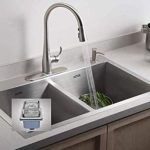
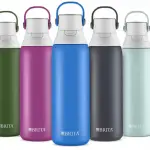
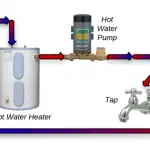
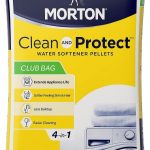
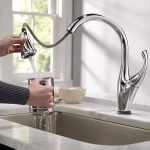





Add Comment